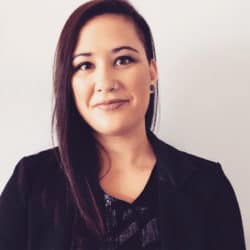Earlier this year, with the goal of building stronger connections between the academic community at PhiLab – the Canadian research network on philanthropy based in Montreal – and the charitable and non-profit sector, we commissioned journalist Diane Bérard to conduct interviews with a range of PhiLab researchers.
Publisher’s note: Earlier this year, with the goal of building stronger connections between the academic community at PhiLab – the Canadian research network on philanthropy based in Montreal – and the charitable and non-profit sector, we commissioned journalist Diane Bérard to conduct interviews with a range of PhiLab researchers. We hope these interviews put a face to the people who have chosen to make the non-profit sector their area of study – and provide insights into the important work they’re doing, their passions, and their thinking about the sector.
***
Over the past few years, the Canadian philanthropic sector has been able to count on the work of PhiLab, a network of more than 80 researchers whose headquarters are located in the downtown Montreal offices of the Université du Québec à Montréal (UQAM). PhiLab’s researchers can be found in five hubs: in Quebec, Ontario, the Atlantic and West Coast regions, as well as an Indigenous research hub, led by The Circle on Philanthropy and Aboriginal Peoples in Canada.
PhiLab is a centre for partnership research. Each of its research projects is conducted with one or more actors in the philanthropic sector, in response to a specific need of the sector. It is also a space for sharing information and for putting new research on philanthropy into practice, specifically as it relates to Canadian foundations. The network not only disseminates the research it produces on its own; it also monitors research being carried out elsewhere so it can disseminate existing knowledge on the topic.
PhiLab owes its existence partly to Quebec’s Chagnon family. After this family of entrepreneurs sold their company and became full-time philanthropists, they carefully considered what role they could play and what contribution they could make to their community. In the process, they realized that there was almost no research being carried out on Canada’s philanthropic sector. The PhiLab network now produces applied and fundamental research on different themes, questions, and issues relating to the history and development of philanthropy in Canada. It also makes comparisons between philanthropy in Canada and in other countries.
So, let’s look at the circumstances that led to the creation of PhiLab.
When it was launched in October 2000, the Lucie and André Chagnon Foundation sent shock waves across the philanthropic landscape. In a sector accustomed to low-profile action, the new foundation decided, instead, to carry out its work in full view of the public. Founders of the telecommunications company Vidéotron, the Chagnons were one of the most famous business families in Quebec at the time. They brought an entrepreneurial approach to philanthropic work and quickly developed important partnerships with the public health sector in Quebec.
While its $1.4-billion endowment fund does turn heads, the foundation’s strategy is really what caused a stir in the philanthropic sector. From 2005 to 2015, the Lucie and André Chagnon Foundation became a full-fledged partner of the Quebec government. Their entrepreneurial approach provoked considerable discomfort in Quebec’s community services sector, as well as skepticism among the general public. Public–private partnerships like this were still not common at the time.
In 2010, the Lucie and André Chagnon Foundation decided to take a hard look at the social acceptability issue they were facing and, more broadly, think about what the foundation’s role in communities could be. Researchers Taïeb Hafsi (HEC Montréal), Benoît Lévesque (UQAM), Juan-Luis Klein (UQAM), Dennis Harrisson (UQO), and Jean-Marc Fontan (UQAM) assisted the foundation in this reflection process. “We quickly came to realize that there were serious gaps in the literature and the research on philanthropy in Quebec and Canada,” explains Fontan, a professor of sociology who is also co-director of PhiLab. “The only documents we could find to help answer the Chagnon Foundation’s questions came from the United States.”
In 2012/2013, the research team put out a call to their counterparts across Canada, asking them to imagine how researchers could work on philanthropy and the issues it raised. What kind of knowledge was needed? To find out, the PhiLab’s co-directors – Fontan and Peter R. Elson, a professor at the University of Victoria’s School of Public Administration – began meeting with philanthropic foundations across Canada. It took a year to find common ground between the needs of philanthropists, who wanted to generate knowledge about the impact of their donations, and the interests of researchers, who wanted to assess how philanthropy was contributing to social and environmental justice. And so PhiLab started to take shape.
There was agreement on three objectives:
- to create an evolving profile of the philanthropic sector;
- to measure the impact of different philanthropic actions on social and environmental justice; and
- to ensure that the work and issues of medium-sized foundations were covered.
These objectives could be explored through three questions:
- What is the political role of grantmaking foundations in the context of the social and environmental transition?
- What are the impacts/influences and/or benefits of grantmaking foundations with respect to socioeconomic and environmental issues?
- How can research help to better understand, publicize, and support the operations of small and medium-sized foundations?
In addition to the ongoing concerns of foundations, such as management issues and administrative costs, PhiLab researchers also work on timely issues such as food security, reconciliation with Indigenous Peoples, racial justice, collective governance, and social finance. Some researchers are very active in the philanthropy sector and devote more than half their work to it. Others carry out projects on an ad hoc basis.
When a foundation works with PhiLab
PhiLab’s main challenge is a cultural one, says Fontan. “All of our research is carried out in partnership with foundations. This is the norm. But nearly three-quarters of these foundations have no experience participating in research projects. They tend to see us more as consultants. However, we have a very different way of working.”
Generally, a consultant will define the parameters of their mandate with a client and then propose a range of services from which the client can choose. After that, the production of the knowledge is outsourced, and the consultant is responsible for managing it. The results of the report then belong to the client. “Partnership research is more organic,” Fontan explains. “It is the product of ongoing dialogue between the partner organization and the researcher, not of a framed request, like that of a consulting mandate.”
Fontan emphasizes that working with a researcher means that when points of tension arise, the researcher does not hide them. A good example is university foundations questioning the divestment of the fossil fuel sector. There are two opposing positions: either support divestment or resist it on the basis that such a move would put the financial sustainability of the foundation at risk. “We discuss the political aspects of our study with partner foundations throughout the research process. When we present our findings, a researcher does not make any firm recommendations the way a consultant would. Instead, they explain nuances and offer possibilities.”
The turnaround time for producing the research is also longer, and for three reasons. First, the knowledge that is produced is often the result of a cross-fertilization process. Researchers may combine field expertise and case studies, giving consideration to what theories suggest – all of which must be accompanied by a literature review. Finally, the research team is composed mostly of students, the goal being to train a new generation of researchers, but this adds a training period and a learning curve to the process as well.
Partnerships for the future
Building a relationship between PhiLab and the philanthropic world is an ongoing process. “The conversation between our researchers and the foundations has begun. We are getting to know each other,” Fontan says. “We built an initial bond of trust through formal exchanges, in the framework of partnership research mandates. Now we have to strengthen that bond through informal relationships, including things like spontaneous telephone conversations. We also need to expand our network to include foundations that are outside our usual circle of collaborators.”

